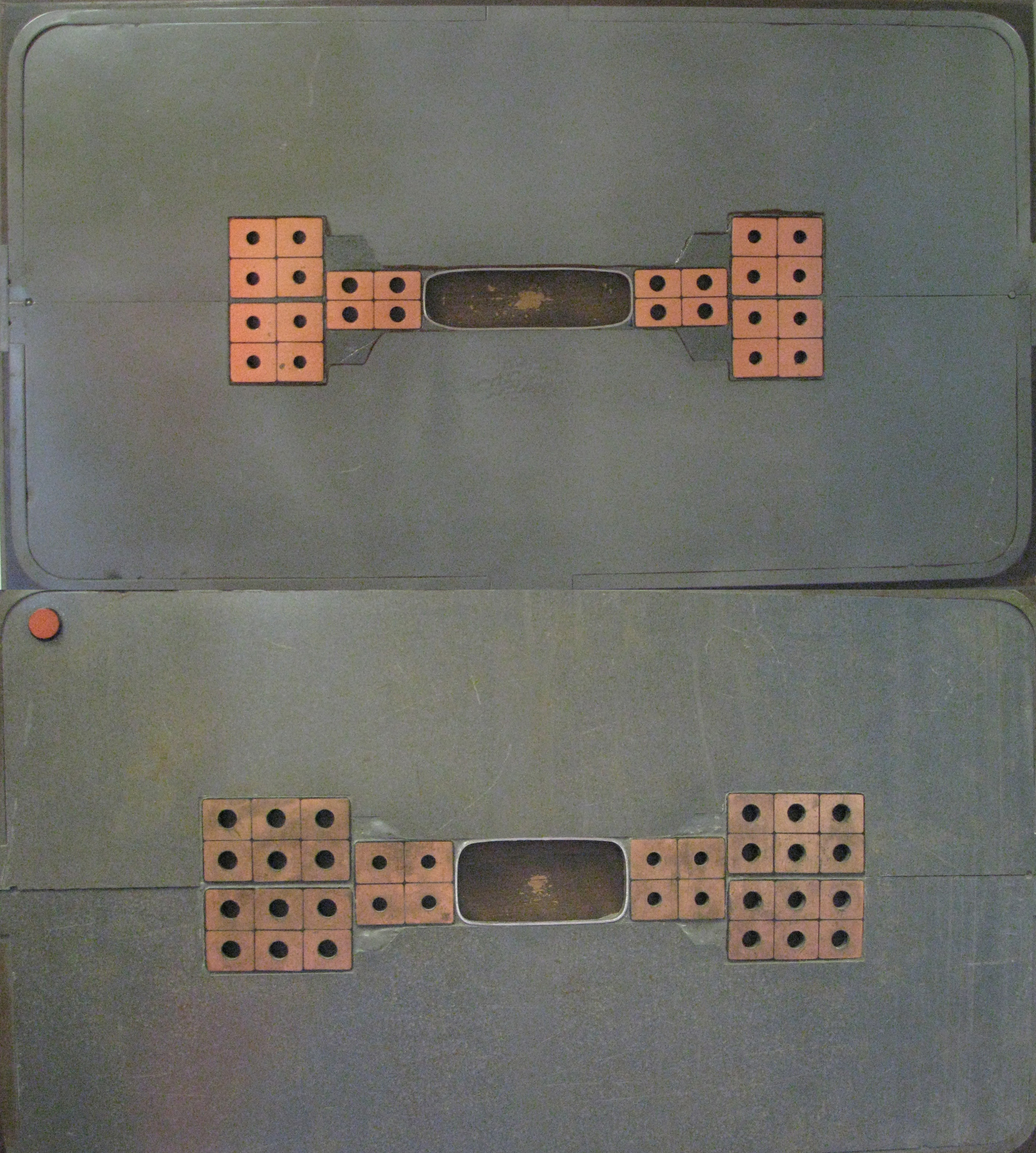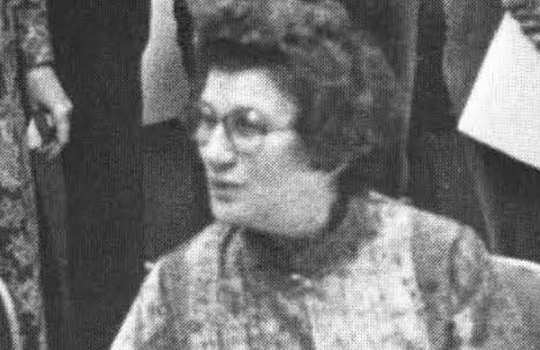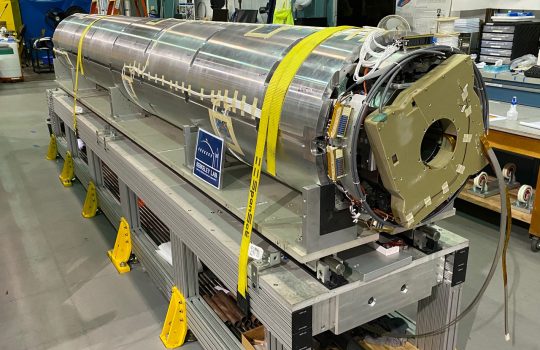Paintbrush
Back in 1972 or so, while I was a graduate student at Cornell University, fellow graduate student Steve Herb joined Fermilab experiment E-26. On one of his regular visits back to Cornell, Steve said that he was called into Fermilab Director Bob Wilson’s office. “What for?” I asked. Apparently Fermilab artist Angela Gonzales was not very happy about the green color that Steve had painted his toroid magnets.
Steve said that he could remove the windings that they had laboriously placed on the steel toroids, repaint and restore the windings. However, that would probably kink the windings, which would require the purchase of new copper cables. So he asked Bob whether he should do that.
Steve said that Bob replied something like, “Oh, it’s OK. But next time, before you pick up a paint brush, check with Angela first.”
Viewpoint
In June 1978, Fermilab Director Bob Wilson’s sculpture “Broken Symmetry” was erected at the Pine Street entrance to Fermilab. I had been away on the day that it was erected, so later that evening my wife Jean and I walked in from our nearby home in Batavia to check it out.
Just as we approached “Broken Symmetry” from the west, Bob Wilson drove in from the east. He asked, “What do you think?” I said, “Pretty interesting … why did you paint it black?” Bob replied, “It’s not black, it’s orange.” Startled, I said “Say what?” Bob replied, “Come over here,” at which point I realized what he had done. I guess you just shouldn’t ask an artist “Why?”.
A paint job
In 1983, as we prepared for the first beam from the Fermilab Tevatron, we refurbished and upgraded all of our facilities in the Fixed Target Experimental Areas. Although the Tevatron was to be capable of running at an energy of 800 GeV, the first few months of operations were to be limited to 400 GeV in order to finish off some experiments that were not to be upgraded to 800-GeV capability. I added a second dipole magnet to the single-dipole magnet in the Proton East primary beamline (my version of the Energy Doubler). In November 1983, a colleague was trying to tune the first Tevatron 400-GeV beam through these two dipoles in Proton East, without luck. The beam somehow got lost in those 40 feet of magnets. I walked into the control room and, using the beam loss monitors, was able to thread the beam through the two dipoles, but at 50 percent greater electrical current than expected. This indicated some sort of electrical short, which meant lower magnetic field and less bending. Since we had designed for 800-GeV operations, this extra current was within our tuning range at 400 GeV, at least for the short term.
During the next interruption of accelerator operations, that typically occur while commissioning a new machine, I accessed the Proton East beamline to see if I could determine what the problem was. Everything looked normal until I noticed that that the beam pipe on the upstream B2 dipole was a little wider (5 inches) than for the downstream B2 dipole (4 inches). “What the…!?!” One of those baby blue (NAL Blue Light) dipole magnets was really a B1 dipole, which should have been dark blue (NAL Blue Dark). The inner coils of the B1 and B2 dipoles are wired exactly opposite, so when the electricians saw the baby blue color, they had hooked up the B1 magnet as if it were a B2 magnet, thereby setting them up so that the two outer coils produced magnetic fields pointing upwards and the one inner coil produced a magnetic field pointing downward. This reduced the net field in that magnet, requiring more current to get the required beam bending. Once this was realized, it was an easy fix to reconfigure the connections for proper operation. With a Sharpie pen, I wrote on that miscolored magnet, “This is really a B1 magnet.” Yes, I should have noticed that error before beam arrived, but that level of subtlety was a little beyond normal.
The next workday, I discussed this with the engineer in charge of the beamline installations who said that earlier, in the shop, they had given a summer student a can of baby blue paint and told him to “paint those magnets,” not realizing that there was a B1 in among the B2s.

You’d be hard-pressed to tell the difference between these two types of magnets (B1 upper, B2 lower), which were both painted light blue, installed in the beam tunnel simply from the widths of their beam pipes.







